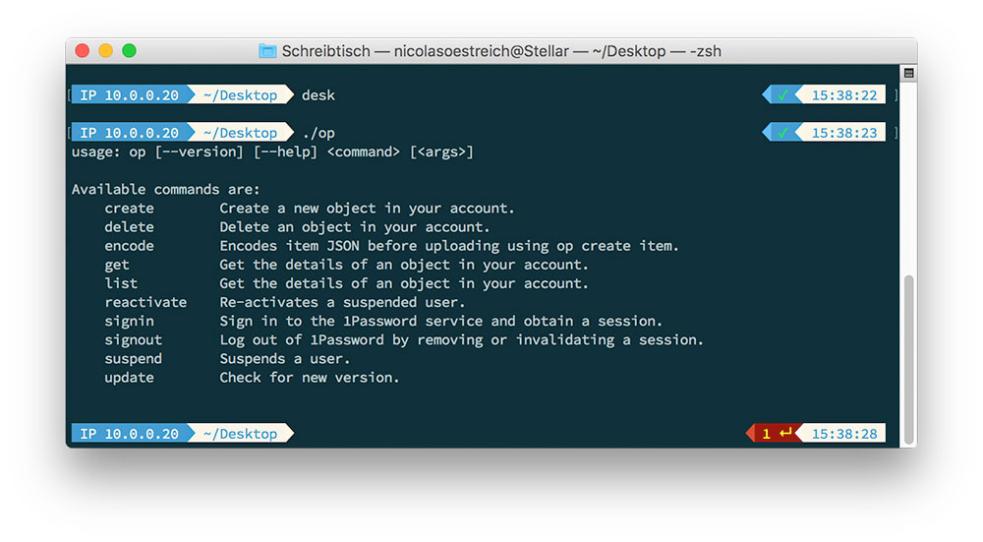The Future of Command Line Interface (CLI): Innovations and Emerging Trends
The command line interface (CLI) has been a cornerstone of computing for decades, providing a powerful and efficient way to interact with computers and perform various tasks. As technology continues to evolve, the CLI is also undergoing significant innovations and emerging trends that are shaping its future.

Innovations In CLI Technology
New Programming Languages And Frameworks
The emergence of new programming languages and frameworks specifically designed for CLI applications is driving innovation in this领域. These languages and frameworks offer features tailored to CLI development, such as improved syntax, enhanced libraries, and powerful debugging tools. This makes it easier for developers to create sophisticated CLI applications with greater efficiency and flexibility.
Integration Of Artificial Intelligence (AI) And Machine Learning (ML)
The integration of AI and ML into CLI technology is bringing about exciting possibilities. AI-powered CLI tools can provide enhanced user interaction, context-aware suggestions, and automated task completion. ML algorithms can analyze user behavior and preferences to personalize the CLI experience and offer tailored recommendations. This integration is revolutionizing the way users interact with the CLI, making it more intuitive and user-friendly.
Cross-Platform CLI Tools And Frameworks
The development of cross-platform CLI tools and frameworks is breaking down barriers between different operating systems. These tools and frameworks allow developers to create CLI applications that can run seamlessly across Windows, macOS, Linux, and other platforms. This cross-platform compatibility opens up new possibilities for collaboration and sharing of CLI scripts and applications, fostering a more unified and interconnected CLI ecosystem.
Innovations In User Interface Design

Innovations in user interface design are making the CLI more user-friendly and accessible. Improved command completion, syntax highlighting, and customizable themes are enhancing the overall user experience. These design improvements make it easier for users to learn and use the CLI, reducing the learning curve and making it more appealing to a wider audience.
Emerging Trends In CLI Usage
Growing Popularity Among Developers, System Administrators, And Security Professionals
The CLI is gaining popularity among developers, system administrators, and security professionals. Developers appreciate its efficiency and power for building and debugging applications. System administrators rely on the CLI for managing and maintaining systems, while security professionals use it for tasks such as vulnerability assessment and penetration testing. The CLI's versatility and wide range of tools make it an indispensable tool for these professionals.
Increased Adoption For DevOps, Infrastructure Management, And Cloud Computing
The CLI is increasingly being adopted for DevOps, infrastructure management, and cloud computing. DevOps teams use CLI tools for automating build, deployment, and testing processes. Infrastructure management tasks such as server provisioning, configuration, and monitoring are also commonly performed using CLI commands. In the cloud computing realm, CLI tools are essential for managing cloud resources, deploying applications, and monitoring cloud services.
Emergence Of CLI-Driven Automation And Scripting
The emergence of CLI-driven automation and scripting is transforming the way tasks are performed in various domains. CLI scripts can be used to automate repetitive and complex tasks, saving time and reducing manual effort. This automation is particularly valuable in DevOps, system administration, and cloud computing, where repetitive tasks are common. CLI scripts can also be used to create custom tools and utilities, further enhancing productivity and efficiency.
Integration With Modern Development Environments And IDEs
The integration of CLI with modern development environments and IDEs is making it more accessible to a wider audience. Developers can now use the CLI directly within their IDEs, eliminating the need to switch between different tools. This integration provides a seamless and cohesive development experience, allowing developers to leverage the power of the CLI without leaving their familiar IDE environment.
Benefits And Challenges Of CLI
Benefits
- Efficiency and Speed: CLI commands can be executed quickly and efficiently, saving time.
- Automation: CLI scripts can be used to automate repetitive tasks, reducing manual effort and improving productivity.
- Flexibility: CLI provides a flexible environment for customization and tailoring commands to specific needs.
- Cross-Platform Compatibility: Many CLI tools are compatible across different operating systems, allowing for seamless usage.
Challenges
- Steep Learning Curve: CLI can be challenging for beginners to learn and master.
- Lack of Graphical User Interface (GUI): CLI requires users to type commands, which can be less intuitive than using a GUI.
- Limited Accessibility: CLI is not as accessible to users with disabilities or those who prefer a more visual interface.
Future Outlook And Conclusion
The future of CLI is bright, with continued relevance and potential advancements on the horizon. The integration of AI, ML, and cross-platform compatibility will further enhance the CLI's capabilities and user experience. The growing popularity of CLI among developers, system administrators, and security professionals indicates its enduring value in various domains. As technology evolves, the CLI will continue to play a vital role, providing a powerful and efficient way to interact with computers and perform complex tasks.
However, addressing the challenges associated with CLI, such as the steep learning curve and limited accessibility, is crucial to ensure its widespread adoption. Training and education initiatives can help bridge the knowledge gap and make CLI more accessible to a broader audience. By embracing innovation and addressing challenges, the CLI can continue to thrive and remain an essential tool in the ever-changing technological landscape.
YesNo

Leave a Reply